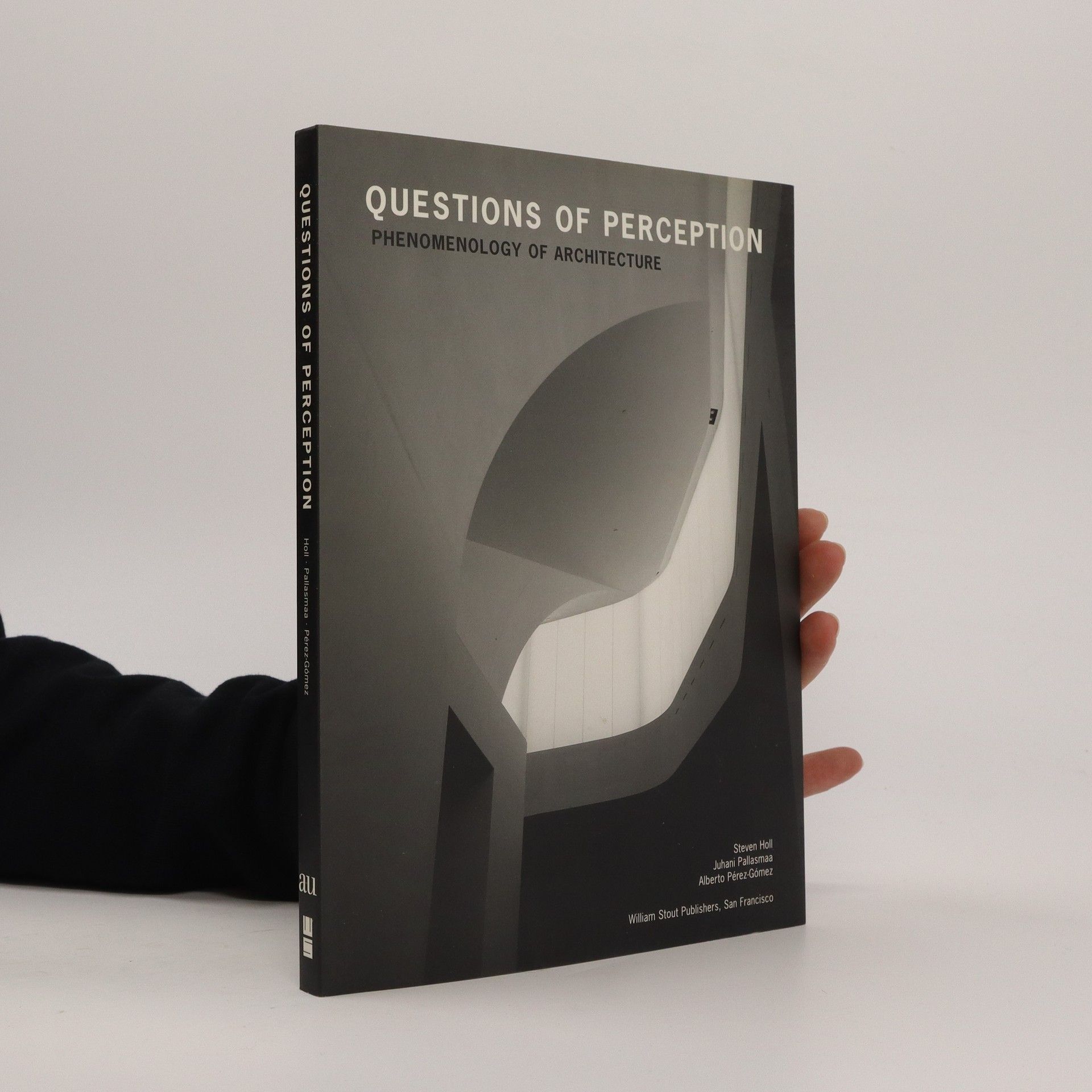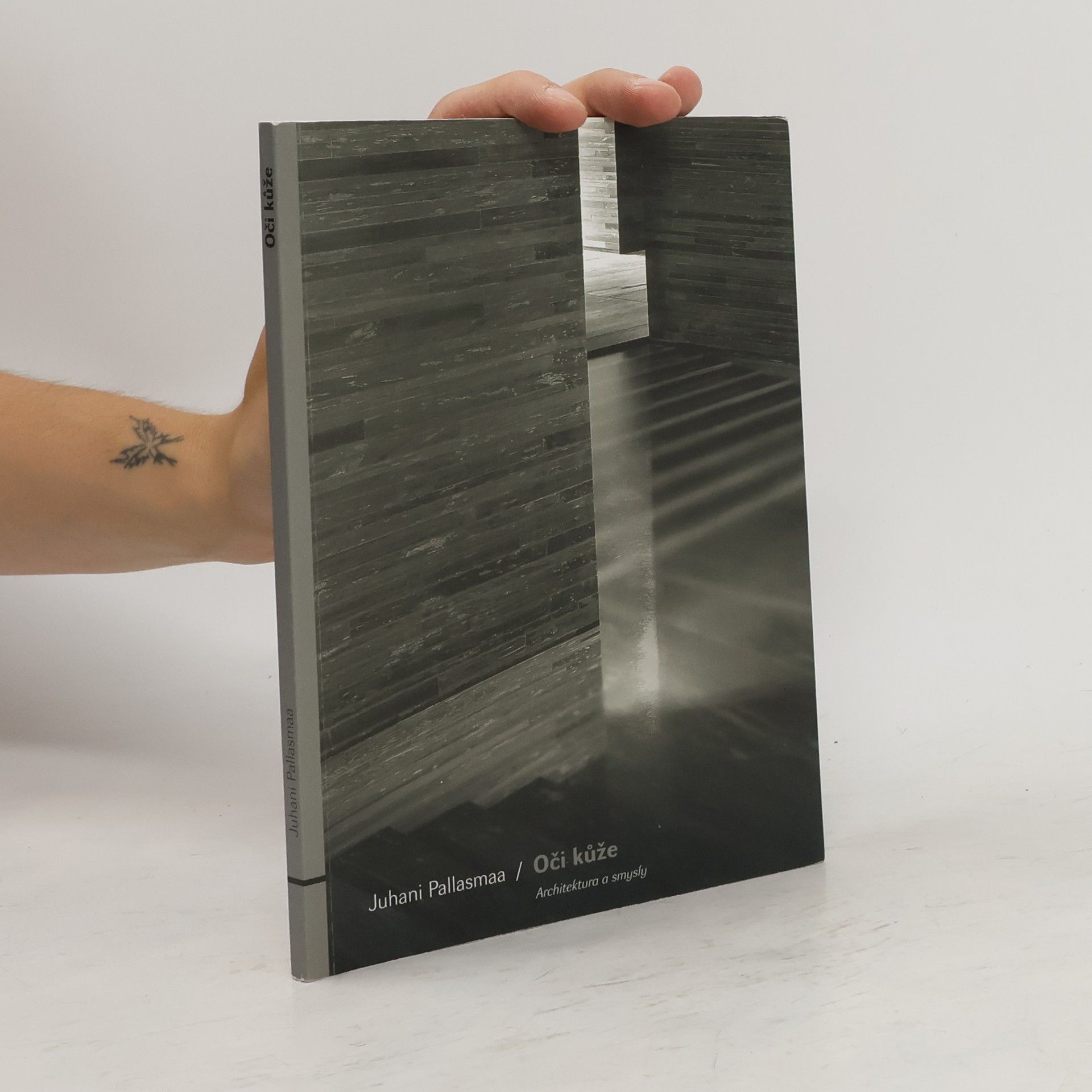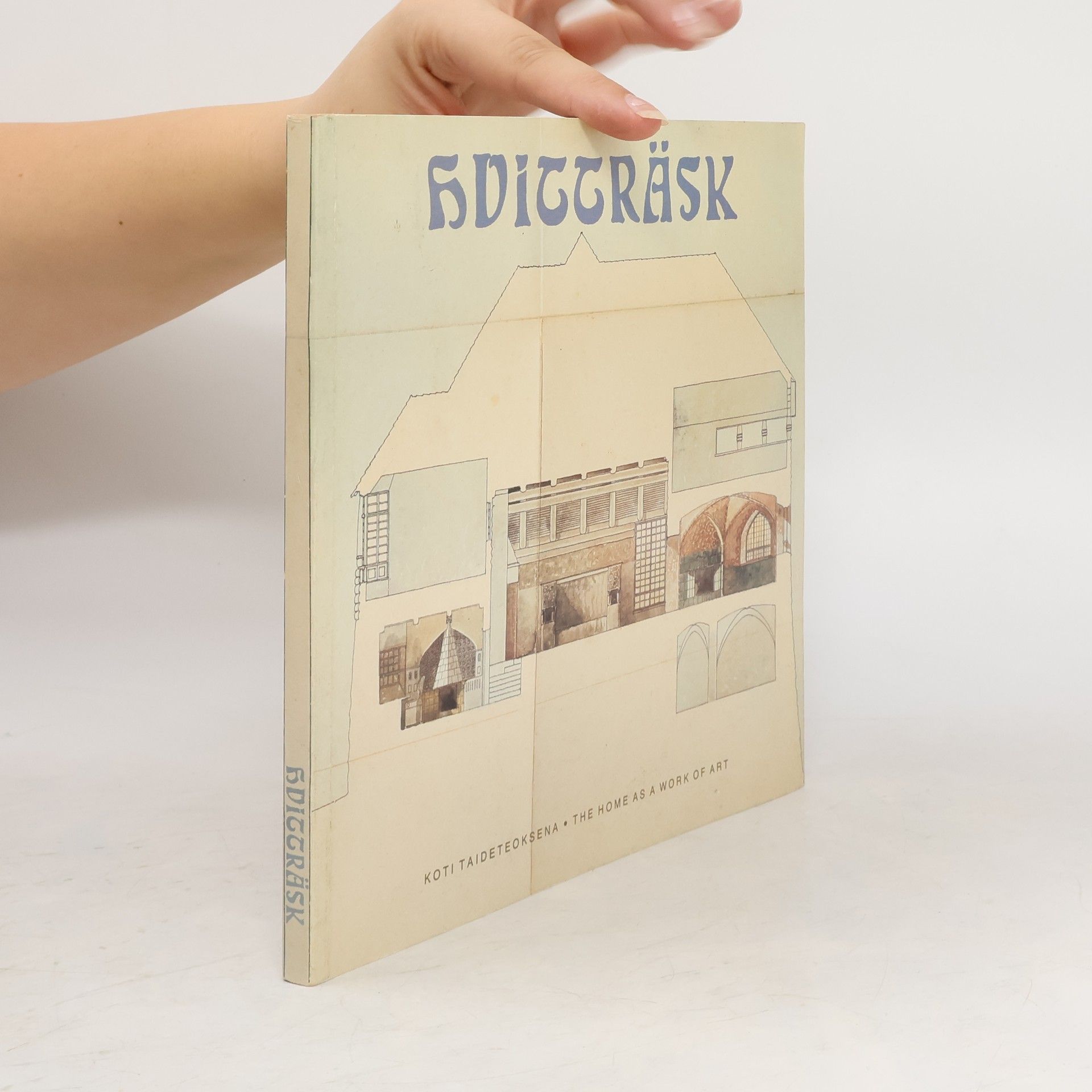Architektura má moc inspirovat a umocňovat život, ale proč se mnohé projekty, které vypadají skvěle na papíře, ve skutečnosti zklamáním? Juhani Pallasmaa tvrdí, že problém spočívá v převaze vizuality v dnešní technologické a konzumentské kultuře, která ovlivňuje architektonickou praxi a vzdělání. Naše zkušenost je utvářena kombinací pěti smyslů, avšak většina architektury se soustředí pouze na zrak. Tento důraz na zrak potlačuje ostatní smysly, což vede k ochuzení životního prostředí a pocitům odloučení. Kniha, poprvé vydaná v roce 1996, se stala klasikou architektonické teorie a je součástí přednášek na školách po celém světě. Obsahuje dva rozšířené eseje: první zkoumá historický vývoj okulocentrického paradigmatu od starověkých Řeků a jeho vliv na architekturu a vnímání světa. Druhý se zaměřuje na roli ostatních smyslů v autentické architektonické zkušenosti a navrhuje cestu k multisenzorické architektuře, která podporuje pocit přináležení. Od prvního vydání vzrostl zájem o tělo a smysly v architektonické filozofii a pedagogice. Nové, revidované vydání této zásadní práce obohatí nejen architekty a studenty, ale také čtenáře o vnímání světa kolem nich.
Juhani Pallasmaa Knihy







Existenciální a ztělesněná moudrost v architektuře. V této knize odhaluje Juhani Pallasmaa dosud skrytý potenciál lidské ruky. Ukazuje čtenáři, jak se tužka v ruce umělce nebo architekta stává mostem mezi představující si myslí a formující se představou. Kniha zkoumá mnohonásobné podstaty ruky, její biologickou evoluci a její role při formování kultury. Upozorňuje na to, jak jsou spojení ruka-nástroj a oko-ruka-mysl zásadní pro zručnost. Zdůrazňuje, že tělo a smysly hrají klíčovou roli v paměti a tvořivé práci. Pallasma v Myslící ruce rozvíjí své předcházející dílo Oči kůže a to hlubším zkoumáním interakce emoce a představivosti, inteligence a tvoření, teorie a života. V současné globálně propojené kultuře, která klade velký důraz na vše virtuální a vizuální, se mysl a tělo staly samostatnými a maximálně oddělenými jednotkami. Přestože obdivujeme fyzický vzhled a tělesnou sexuální přitažlivost, samotná role těla je při rozvíjení úplného pochopení fyzického světa a lidské kondice zanedbávána. Nedaří se nám ocenit lidské tělo jako spojení smyslů a tělesných funkcí. Přitom obojí pohromadě je potřeba k produkci a zachování vědění. Pouze pomocí jednoty mysli a těla lze plně realizovat řemeslnou zručnost a uměleckou práci. Dokonce i činnosti, které jsou obecně považovány za výhradně intelektuální (například psaní a uvažování), závisí na sjednocení mentálních a manuálních dovedností.
The Eyes of the Skin - Architecture and the Senses 3E
- 130 stránek
- 5 hodin čtení
First published in 1996, The Eyes of the Skin has become a classic of architectural theory. For every new intake of students studying Pallasmaa s classic text, The Eyes of the Skin provides a totally fresh understanding of architecture and a new set of insights.
Architecture is usually analyzed and taught as a discipline that articulates space and geometry, but the mental impact of architecture arises significantly from its image.
Questions of Perception
- 155 stránek
- 6 hodin čtení
A+U 1994 special edition covering the work of Holl, Pallasmaa, and, Perez-Gomez, titled Questions of Perception. Their three individual essays presented in the book, are thematically linked; each one tries to explain the role man's perception plays in architecture and also explores phenomenal accounts. In their original introduction, the authors write: "The endless cultural limitations and contradictions inherent in artistic work, revealed with impeccable clarity and logic by the critics' deconstructive theory, are ultimately of limited use for the generation of architecture. The architect must take a position, one that necessarily has ethical consequences, and for which words, a theoretical discourse is nevertheless indispensable.Bilingually presented in English and Japanese.
The book showcases the transformative power of nature on architecture through Hélène Binet's photography in Suzhou's classical gardens. Her striking images capture the effects of weather and time, turning monotonous walls into vibrant representations of the natural world. By intertwining foreground and background, Binet crafts narratives that navigate between two-dimensional surfaces and three-dimensional spaces. Accompanied by an essay from architect Juhani Pallasmaa, the work highlights Binet's unique ability to blend precision with ambiguity, inviting viewers to engage their imagination.
Hvitträsk
koti taideteoksena
Illustrated book about the home where architect Eero Saarinen was raised as a child by his architect-designer parents.
Helene Binet's architectural photography is here revealed in all its subtlety and quiet sensitivity.
rootedness Discover the insights and lessons of architect Juhani Pallasmaa In Reflections for Young Architects, Juhani Pallasmaa delivers an insightful and expansive collection of his most compelling ideas into architecture’s position among arts and culture. Pallasmaa speaks to architecture students and young professionals, discussing each topic with sincerity and openness, suggesting what can be learned from areas of culture beyond the boundaries of familiar professional disciplines. He outlines the growing need for an architecture based in self-awareness, reconnection to the environment, and a sense of ethical responsibility.Each essay in Rootedness was initially conceived and presented as an educational lecture and has been carefully edited with clarifications, refinements, and valuable expansions. Accompanying sketches by the author emphasize the personal and intimate nature of the essays. The book also Explorations of perception, creative practice, and the need for an ethical stance Thoughts, meditations, and challenges emerging from the author’s search for identity and purpose in his architectural work A wealth of references within the essays, as well as recommendations for books and films from which readers may draw further inspiration Designed for students of architecture at any age, Reflections for Young Architects will also inspire professional architects, designers, and those in other creative professions.
